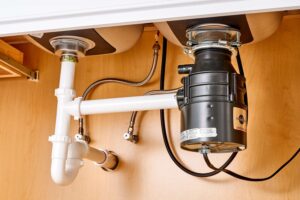5-Star AC vs. 3-Star AC: How to Choose the Right One

As the summer draws closer, and the temperatures starts to steadily inch towards the sweltering point, you’re probably going to look at ways to keep cool. Installing an air conditioner for your home or workplace is one of the easiest ways to make sure you’re cool, comfortable and safe from heatstroke.
Lucky for you, there is no dearth of models on the market, specially designed to suit all manner of rooms, styles and budgets. If you’re looking at buying a new unit this summer, or replacing an old one, look no further than Bajaj Finserv’s Summer Sale.
The Bajaj Finserv EMI Network has over 60,000 partner retailers across 1300 cities, offering over a million top-of-the-line products. Shop from among the best domestic and international AC brands both online or at a local partner store and pay in No Cost EMI. Simply swipe your EMI Network Card at checkout or pay using in-store financing to convert your AC’s cost into easy EMIs as low as Rs. 1,999.
What’s more, you can now also get an Insta Credit of up to Rs.5,000 deposited directly into your Bajaj Wallet when you shop for an AC worth Rs. 20,000 and an Insta Credit of Rs. 7,000 when you shop for an air conditioners worth Rs. 40,000. With the various flexible EMI plans and bonuses on offer, you can rest assured you don’t have to scrimp on your AC this summer.
Bringing home your dream AC is going to be easier than you thought, and now the only challenge is finding the right model for your home or workplace. With the staggering range on offer, you might be unsure where to start your search. The first step to finding an AC that is right for your home is to know the different types available, and to ensure you make an informed decision about which one best suits you.
As you browse retailers for your new AC, you’ll notice that many ACs are defined by their star ratings. Star ratings signify the efficiency of the AC model—the higher the rating, the more efficient your AC is. Read on to understand the basic differences between a 3-star and 5-star AC, so that you can choose the one that works best for you.
How star ratings are determined
Essentially, the star ratings convey the energy efficiency rating or EER of the AC unit. The EER is calculated based on the ratio of the cooling capacity, which is expressed in British Thermal Units or BTU, to the electrical input, which is expressed in watts.
The official star rating is provided by the Bureau of Energy Efficiency based on this formula. A 3-star AC has an EER of 2.9-3.09. A 5-star AC has an EER of 3.3 or higher. A general rule of thumb is that each rating is 14% more efficient than the last. For example, a 5-star AC is 28% more efficient than a 3-star AC.
What defines energy efficiency?
When an AC is said to be more efficient, it essentially means that it takes less electricity to generate a certain amount of cooling power. This means that the more efficient your AC, the lower your electricity bill will be.
A more efficient AC also releases less CFC, which is a harmful by-product of many air conditioners. So, energy efficient ACs are also eco-friendlier. In this regard, a 5-star AC gives you a lot more for a lot less, and is far superior to a 3-star AC.
Energy efficiency vs. cost efficiency
The rule of thumb is that the more energy efficient an AC is, the more cost efficient it will be. An AC that is able to cool a room in less time using less electricity, will automatically come with a much smaller electricity bill every month. Over time, a 5-star AC will prove to be a lot more cost efficient than a 3-star model.
That being said, a 5-star AC will always cost more than a 3-star AC, specifically because of the energy saving technology that it is equipped with. For example, a Godrej 1-ton 3-star split AC would be priced around Rs.27,000, whereas a 5-star Godrej AC of the same tonnage costs about Rs.5000 more, around Rs.32,000. It is up to you to consider whether the long-term savings are worth the price of purchase.
Making the right choice for you
It may seem like a no-brainer that a 5-star AC is a better purchase. That being said, a 3-star AC comes with its own advantages. If you happen to be living in a place where you don’t plan on using the AC through the year or happen to be making the purchase for a room you don’t use often, a 3-star AC might make more financial sense.
It is also important to consider the total operating costs of your AC from installation to the cost of regular servicing. Installation costs are typically the same for both 3-star and 5-star ACs, if they’re the same tonnage.
For example, a 1.5ton Blue Star AC would typically cost Rs.1500 to install, irrespective of efficiency star rating. In some cases, however, you may find that a 3-star model that is not being used frequently and doesn’t require high-level maintenance, is a lot cheaper to operate over the long term.
It is important to note that AC star ratings tend to be revised every year. It is likely, for example, that an AC with a 3-star rating one year is more efficient than an AC that had a 4-star rating the previous year, simply because technology improves and standards change. Make sure that you’re looking at the most recent energy ratings when you make your purchase, irrespective of how old the actual AC model is.
Other factors will also influence the overall cost of your AC and therefore must be considered before you make your final purchase. For example, a 1.5ton 5star split Lloyd AC costs Rs. 45,500 whereas an O General AC with the same tonnage and rating costs over Rs.10,000 more because it has a significantly stronger airflow and lower indoor noise level.
Once you’ve considered all the options and are ready to make your purchase, head over to Bajaj Finserv to check your pre-approved offer. Once you’ve checked this, you can avail of a customised No-cost EMI plans for your AC purchase and for all your subsequent big purchases too. With Bajaj Finserv’s EMI Network, your summer splurge got a whole lot easier!






